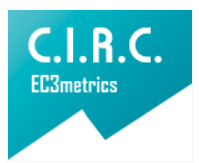Guide for The Speech and Language Pathology in Evaluation and Intervention of the Dysphonia by Muscular Tension: Review and Case
Guía para el Fonoaudiólogo En Evaluación e Intervención de la Disfonía Por Tensión muscular: Revisión y caso
Main Article Content
Dysphonia due to muscle tension is one of the common
diagnoses in the voice clinic and the voice therapist /
pathologist or vocologist is a fundamental part of the
multidisciplinary team responsible for its management.
The objective of this article is to describe muscle
tension dysphonia as part of the spectrum of the
named functional dysphonias. En the first part, several
definitions, classifications and characteristics of muscle
tension dysphonia are presented so they can serve as
a guideline for the voice therapist in the evaluation
process and treatment of people with vocal disorders
secondary to muscle tension. Then, in the second part,
a clinical case is presented in which the therapeutic
approach is described after analyzing the associated
factors, the results and effectiveness of the treatment are
discussed. Therapy based in coordinating and balancing
the physiologic vocal systems can be an effective tool in
resolving cases of muscle tension dysphonia.
Downloads
Publication Facts
Reviewer profiles N/A
Author statements
Indexed in
- Academic society
- Bogotá: Corporación Universitaria Iberoamericana
- Publisher
- Bogotá: Corporación Universitaria Iberoamericana
Article Details
Altman, K., Atkinson, C., & Lázaro, C. .. (2005). Current and Emerging Concepts in Muscle Tension Dysphonia: A 30-Month Review. Journal of voice, 19(2), 261-26 7.
Ángel, L. F. (2017). Terapia Vocal, práctica basada en evidencia. Obtenido de http://www.uneditorial.com/pageflip/acceso-abierto/epub/terapia-vocal.epub
Angsuwarangsee, T., & Morrison, M. .. (2002). Extrinsic laryngeal muscular tension in patients with voice disorders. . Journal of voice, 16(3), 333-343.
ASHA, A. S.-L.-H. (s.f.). Voice disorders. Clinican topics. . Obtenido de https://www.asha.org/PRPSpecificTopic.aspx?folderid=8589942600§ion=Overview
Baker, J., Ben-Tovim, D., carnicero, A., Esterman, A., & McLaughlin, K. (2007). Development of a modified diagnostic classification system for voice disorders with inter-rater reliability study. Vonia Phoniatr Logoped. , 32(3), 9 9 -11 2.
Chedda, N. (2016). Functional Voice Disorders. Recuperado el Junio de 2018, de https://emedicine.medscape.com/article/865191-overview#a2.
Cobeta, I., Núñez, F., & Fernández, S. (2013). Patología de la voz (ICG Marge, SL ed., Vol. 1). Marge, medica Books.
Colton, R. H., Casper, J. K., & Leonard, R. (1996). Understanding Voice Problems: A Physiological Perspective for Diagnosis and Treatment. (4 ed.). (L. W. Wilkins, Ed.) USA.
García Tapia, R., & Cobeta Marco, I. (1996). Diagnóstico y tratamiento de los trastornos de la voz. Ponencia Oficial de la SEORL-PCF (págs. 339-354). Madrid (ESP): Garsi.
Guzmán, M. N. (2012). Terapia con tracto vocal semi-ocluido: un estudio de caso. Revista Chilena de Fonoaudiología, 11, 87- 97.
Guzmán, M., Higueras, D., Fincheira, C., Muñoz, D., & Guajardo, C. (2012). Efectos acusticos inmediatos de una secuencia de ejercicios vocales con tubos de resonancia. CEFAC, 14(3), 471- 480.
Jacobson, B., Johnson, A., Grywalski, C., Silbergleit, A., Jacobson, G., Benninger, M., & Newman, C. (1997). The Voice Handicap Index (VHI): Development and validation. American Journal of Speech-Language Pathology, 6(3), 66-69.
Kapsner-Smith, M., Hunter, E., Kirkham, K., Cox, K., & Titze , I. (2015). A Randomized Controlled Trial of Two Semi-Occluded Vocal Tract Voice Therapy Protocols. Journal of Speech, Language, and Hearing Research, 58(3), 535–549.
Khoddami, S., Ansari, N., Izadi, F., & Moghadam, S. (2013). The Assessment Methods of Laryngeal Muscle Activity in Muscle Tension Dysphonia: A Review. The Scientific World Journal, 6.
Morrison, M., & Rammage , L. (1996). Tratamiento de los trastornos de la voz. Barcelona [ESP]: Masson S.A.
Roy, N. (2004). Functional voice disorders. En: The MIT Encyclopedia of Communication Disorders. En R. D. Kent. London, England.
Sama, A., Carding, P. N., Precio, S., Kelly, P., & Wilson, J. A. (2001). The clinical features of functional dysphonia. Laringoscopio., 111(3), 458- 463.
Titze, I. R., & Verdolini Abbott, K. (2012). Vocology. The Science and Practice of Voice Habilitation. National Center for Voice and Speech

















